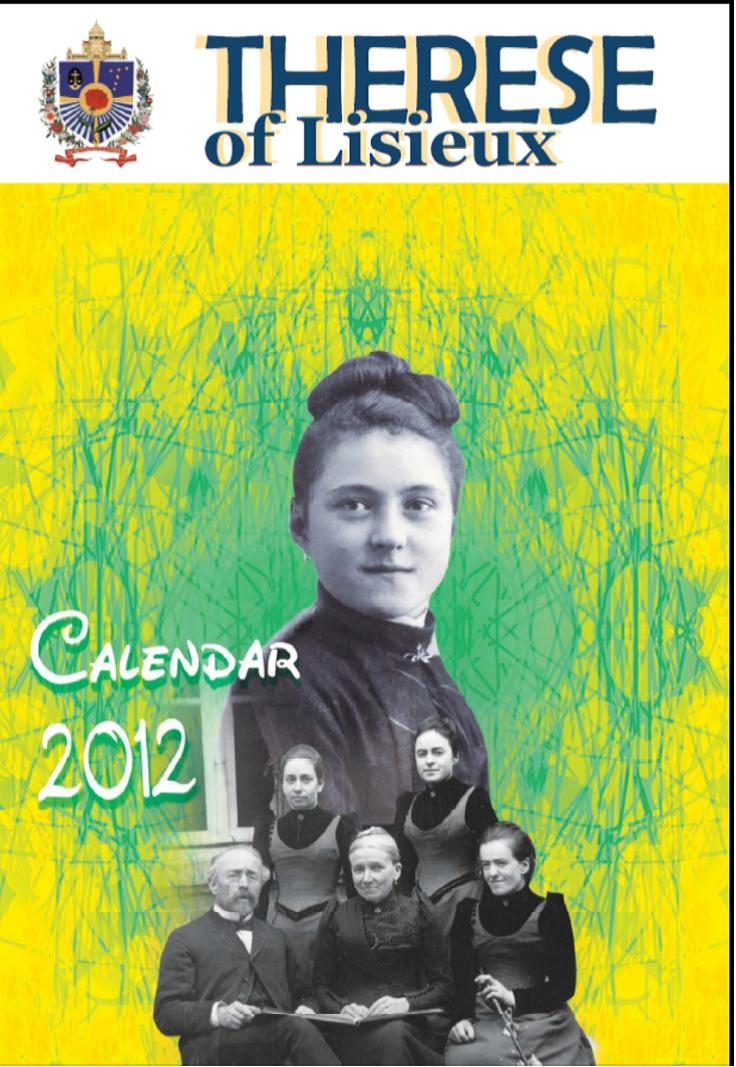New - St. Therese of Lisieux 2012 calendars in English published by the Shrine at Lisieux now available through www.thereseoflisieux.org
/I am delighted to announce that the Shrine at Lisieux has produced its first calendar in English for 2012 and invited me to distribute it online. It is a beautiful 8" x 22" wall calendar which includes several articles about St. Therese and information about activities and publications sponsored by the Shrine at Lisieux. The pages for each month display photographs of Therese and her family, with a quotation from her writings, above a complete liturgical calendar in grid form. Each month also notes the "Theresian anniversaries," the dates of significant events in the life of Therese and her family and in the history of her sainthood. 34 oages, full color, glossy paper. $10. To see the cover and sample pages, please click on the image below. To order, call the telephone number listed below.
December 24th: The good news is the calendar is very popular; the bad news is that we can't send out any more till we get more from Lisieux. Demand for the calendars has been so intense that our first order from France was exhausted in two days. Lisieux is sending more, but it will be a couple of weeks before you receive them. We are still taking orders from our customers, so please feel free to order now, and we will give you priority in shipping as soon as the next batch of calendars arrives. By ordering now, you will also help us know how soon we need to place another order and how many to bring in. We regret that we could not make them available earlier, but, in this first year of the English calendar, they arrived in the U.S. only this week. We are assured that the 2013 calendar will be here in the summer of 2012. Thank you very much for your generous orders.
order by phone at 610 914 9470



